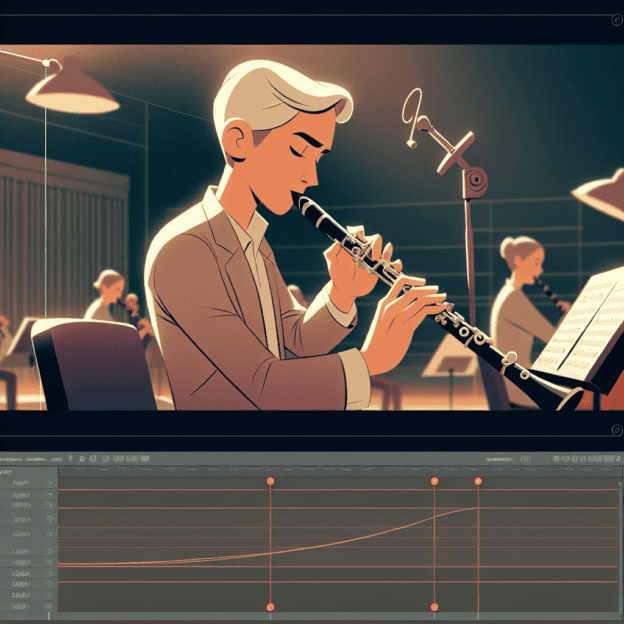Producing a good tone on the clarinet is a key aspect of successful playing that every clarinetist aims to achieve. Whether you're just starting out or have years of experience, a beautiful tone is essential for your personal satisfaction and enhancing your performances. This guide covers the main practices and techniques that contribute to a rich, full, and expressive clarinet sound.
The Importance of Tone Quality
Your tone forms the foundation of your musical expression. A well-produced tone helps you convey emotion and connect with your audience effectively. Clarinetists often struggle to produce a tone that's not only clear and resonant but also consistent across different registers and dynamics.
Factors like breathing, embouchure, and the quality of your instrument and reeds greatly impact sound production. By focusing on these areas, you'll be able to create a solid tone right from the beginning.
Mastering Breath Control
Breath control is crucial for great tone production. It allows you to maintain a steady, supported airflow, which is key for a full-bodied sound. Here are some important tips for mastering breath control:
- Diaphragmatic Breathing: Use your diaphragm instead of just your chest to breathe deeply. This type of breathing provides more air support when playing, improving tone quality.
- Consistent Airflow: Work on maintaining a steady airflow while you play. An uneven or weak air stream can result in an unstable tone, while a constant flow contributes to a richer sound.
- Long Breaths: Practice taking longer breaths and holding your notes to build stamina. As you gain better control over your breath, you'll notice your tone becoming more consistent.
| Breathing Technique | Benefits |
|---|---|
| Diaphragmatic Breathing | Improved air support, better tone quality |
| Consistent Airflow | Richer, more stable tone |
| Long Breaths | Increased stamina, improved tone consistency |
Developing the Right Embouchure
Embouchure refers to how you position your lips and mouth when playing the clarinet. A good embouchure is essential for sound quality:
- Relaxed Lips: Work on maintaining a relaxed but firm grip with your lips around the mouthpiece. This tension allows for better control but shouldn't restrict your airflow.
- Flat Chin: Keep your chin flat and relaxed while playing. This helps maintain an open throat and promotes a free airflow.
- Mouthpiece Positioning: Try different positions for the mouthpiece in your mouth. Finding the right spot can help you discover the best way to produce an optimal tone.
Selecting the Right Mouthpiece and Reed
The mouthpiece and reed you use have a big impact on your tone. Choosing the right ones will improve your sound production:
- Mouthpiece Selection: Invest in a high-quality mouthpiece designed for clarity and responsiveness. Brands like Martin Freres are known for their well-crafted mouthpieces.
- Reed Suitability: The strength and material of your reed will affect your tone. Try different reeds to find what works best for your playing style, keeping in mind that softer reeds are easier to play while harder reeds produce more volume.
Regular Maintenance for Consistent Tone
Taking good care of your clarinet is essential to maintain its tonal quality:
- Swab After Playing: Use a swab to remove moisture from the instrument's bore after each session. This prevents potential damage and ensures a clear, vibrant tone.
- Check Pads and Keys: Regularly inspect the pads and keys for wear or leaks. A well-sealed clarinet is crucial for producing a consistent sound.
- Professional Servicing: Schedule regular checkups with a professional technician to keep your instrument in top condition. They can advise on fixing any issues that might come up during your playing.
Practicing Tone Improvement Techniques
To keep improving your tone, make these exercises a regular part of your practice routine:
- Long Tone Exercises: Focus on holding long tones at a steady volume and pitch. Gradually add dynamics—play a long tone getting louder from soft to loud and back down.
- Scale Practice: Practice playing scales using different articulations, focusing on keeping a consistent tone quality as you move through different pitches.
- Color Exercises: Explore different tonal colors by changing your embouchure, fingerings, and dynamics while playing simple melodies.
Listening and Learning from the Greats
The best way to understand tone production is to listen to and learn from experienced clarinetists. Spend time listening to recordings of famous players, paying attention to their tone quality and techniques. Consider checking out recordings by musicians known for their sound quality, such as:
- Sabine Meyer: Her beautiful tone and technical skill are outstanding.
- Richard Stoltzman: Known for his amazing artistry, Stoltzman brings warmth and expression to his performances.
Studying their playing will help you identify qualities you can add to your own style and will inspire you on your journey to achieving a beautiful tone.
As you progress as a clarinetist, remember that every detail matters in achieving quality sound. By focusing on breath control, developing a strong embouchure, investing in good instruments, and using effective practice techniques, you're on the right path to creating a rich, beautiful tone on the clarinet.
With dedication and practice, your clarinet's sound will showcase your artistic ability. Enjoy exploring and experiencing the joy of music as you grow as a musician.







